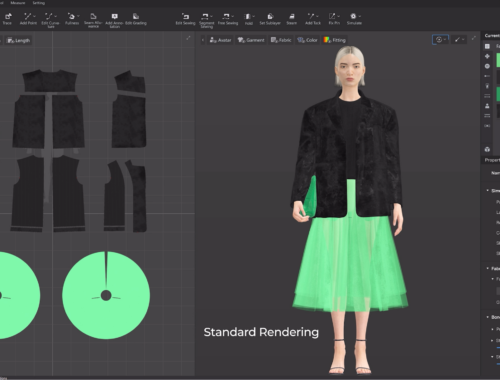What It Takes to Host the New York City Marathon
After 18 years of putting on the marathon show, race director Peter Ciaccia is ready to move on
Peter Ciaccia, who succeeded Mary Wittenberg as race director of the New York City Marathon in 2015, will be retiring after this year’s edition on November 4. By stepping down, Ciaccia will end an 18-year tenure with the New York Road Runners, the organization that puts on the marathon and countless other events almost every weekend. Previously, as the marathon’s technical director, Ciaccia was in charge of ensuring that 50,000 runners had a safe, enjoyable (relatively speaking) 26-mile journey through the nation’s most populous city.
What is it like to orchestrate what is arguably the most high-profile road race on the planet? On the eve of his retirement, we caught up with Ciaccia as he heads into the home stretch of the marathon.
OUTSIDE: For the past three years, you’ve been in charge of the world’s biggest marathon. While nobody would ever claim that putting on a race with 50,000 runners is easy, the NYC Marathon happens every year. So, is it “easy” in the sense that there’s template for what needs to be done?
CIACCIA: We don’t do a cut-and-paste job on any of this. After each event, it’s important to do a review of the logistics. As the races unfold, whether it’s a weekly race or the marathon, we make notes for recap meetings where we go through the list: What worked? What didn’t work? What do we have to change for next year? It helps us keep our events fresh and also keeps everybody sharp. As for the marathon, there’s a template, of course, but nothing’s taken for granted because the city never stops evolving. For example, the city might build a pedestrian walkway somewhere along the course—which they have done in the past—so we have to go out and figure out how we can conduct our race when that pedestrian walkway is in a position that could impact the course. One time, we had to take an entire block out of the course. That’s the kind of stuff we work on all the time. The planning for the next marathon begins right after the last marathon ends. My role in all of this is like being the conductor of an orchestra where all of these teams that work under me are the players. We have the sheet music that we have to follow—otherwise it’s all out of tune.
What’s the difference between a race director and a technical director?
The race director is more involved with recruiting professional athletes and getting to know that side of the business: meeting agents and managers, and talking about what a particular athlete is doing in the scope of their season and deciding whether that person is somebody we want to recruit. The technical director is somebody I equate to the Wizard of Oz, sitting behind that curtain. You’re putting together the logistics of the race: everything from hospitality and catering, right through to race scoring and all the elements in between.
It’s been said that the race director’s job is like that of a chef making a stew, where the athletes are the ingredients. How do you decide what flavor stew you want?
Well, first of all, we want clean athletes. That’s the most important thing. And, to be clear, we have a group here called the Professional Athletes Group that does this all year long, because we have a number of professional races in our calendar—not just the marathon. But what we look for in a particular race, if you take this coming marathon as an example, is that we want to get our defending champions back, and build around that. Also, we’ve been seeing the rise of professional American women in running, so that was a focus this year. We look at who’s performing at the level that would make them be part of the race. We want to bring people in who are really competitive. There are a lot of nuances between different races. Carey Pinkowski’s race, the Chicago Marathon, is a race that athletes will go to and try to run a world record. You’re not going to get that kind of record here but you’re going to get head-to-head competition. So you want to try to build a race that will last from the gun to the finish line. I keep a photo from the finish of the 2005 NYC Marathon on my wall—where Paul Tergat beat Hendrik Ramaala in the very last second. I think from a broadcast standpoint, that’s most compelling. When you have somebody that’s up front and runs away from the race it’s hard to keep people engaged.
Shalane Flanagan is your defending champ on the women’s side, but she’s also a beloved face of the sport in this country. Seems like a double win for NYRR.
That’s the other thing about the pro athlete side. We’re going to work with professional athletes who are going to work with us. Shalane is an ambassador to our youth scholarship program called Run for the Future, which started last year. She also gets the sense of what New York is about in that we’re inclusive of all the runners. No matter what their ages or abilities are, we want the power of what they’ve just accomplished to be celebrated—and Shalane loves that. She is also a big supporter of our Run Clean initiative.
During the lead up to every marathon, you and members of your team are known to cycle the entire course. What’s that about?
We don’t own our venue. Our venue is the streets of New York and we have a wonderful relationship with the agencies of the city. The Department of Transportation is the group that keeps our course pristine and they do an unbelievable job. But things happen over the course of a year and you’ll get a few cracks and fissures in the asphalt. So the bike ride is only to go out and take a look at some of the things we might notice. We make notes and send them back to our contact in the D.O.T. They go out and repair everything. The city puts out an embargo on any kind of construction projects that might impede the course for a couple weeks before the race. But, first of all, we do the bike ride because it’s a great learning experience for folks who are new to our organization. Often, it’s their first marathon, so the ride gets them excited and helps them visualize the race. It’s turned into a tradition for me. It’s really a camaraderie thing.
Before you joined the New York Road Runners, you actually worked in the music industry where you were also very involved in the production side of things. How did that impact your approach to your current job?
People are paying money to come to your race and, for me, it’s not just a race but it’s a show. You’ve got to put on a spectacle where you have that “wow factor” built in. I think we really worked on that over the years. But I stand on the shoulders of those who came before me. I wasn’t the one who figured out how to have three simultaneous starts on the Verrazano Bridge. They figured that out. Holy mackerel! I just got a chance over the years to add some color to it.
What would be an example of your personal touch?
I think we elevated the entertainment factor. With the marathon, and the idea of making it a weeklong spectacle, the idea was to take things that were already there and to shake them up. We used to do this thing called a Friendship Run: our international runners would come to the U.N. and walk up 6th Avenue to the finish line in the park. It was more or less a parade. It was okay, but I always thought it lacked that Olympics-style opening ceremony touch. So we changed that event into what’s now called the Dash to the Finish Line 5K, which includes a pro field, and moved it to the day before the race. The opening ceremony was moved to Friday. Over the years, the opening ceremony has become a really popular event. You have to apply to get in and we have delegations from different countries. Seriously. There’s a flag bearer for each of those countries and it’s really very Olympics style. We added fireworks and television coverage. I get to meet so many people from all over the world; I’m dancing with all the Italians.
Speaking of the marathon’s international appeal, you regularly attend other World Marathon Majors, like Boston or Berlin. Do these big city marathons share ideas with each other about how things could be done better?
When we first started the Abbott World Marathon Majors a dozen years or so ago, before Abbott was even a sponsor, the concept was to get together and raise the profile of the professional runners by creating the Grand Slam of running. Eventually, we saw that it’s much bigger than just the pros. The world was coming to run all these races. As things started moving in that direction, the operational folks behind each of these marathons started getting together and now we share enhancements with each other. I host a breakfast with race directors from around the world on the day before the marathon. The breakfast is held in Tavern on the Green and afterwards we give a tour of our command center, which is this huge installation inside Central Park that houses 120 people from different city agencies, as well as NYRR teams. That’s the kind of thing that we share with each of the marathons around the world.
Apologies for asking this right before your last NYC Marathon, but what do you worry about the most in the final weeks before the race?
Everybody asks that question. As much as I try to control the weather by going to church and saying novenas, that’s the kind of stuff you just don’t have the control over. One year, we had high winds and couldn’t start the wheelchairs on the bridge. That came up way fast on us. We have a meteorologist on our staff, who gives us updates on the hour. He can tell us, for instance, if there’s lightning coming in for which we have all kinds of contingency plans. There’s actually a formula for how fast lightning can move into your area. So, for the marathon, we have places where we can restage the runners if, God forbid, we do have lightning coming in. The most important thing for us is that we deliver a safe and fun experience to everybody.
Eliud Kipchoge just broke the marathon world record in Berlin. Can you reveal anything about the likelihood that we may see him race in the streets of New York?
He was here last year because he was mentoring Geoffrey Kamworor, who won the race. Imagine having Kipchoge as your teacher! When I was in Berlin last month, I pulled Kipchoge aside and was busting his chops a little bit by telling him that he can’t just come over to New York to cheer. It’s time for him to put his feet on the ground and race. I’ll say that the conversations are being had, so we’ll see. We would love Kipchoge to come.
Where do you think you will watch next year’s New York City Marathon?
Someplace warm.
You May Also Like

“AI Meets Couture: How Artificial Intelligence is Redefining the Future of Fashion”
February 28, 2025
コンテナハウスの魅力と活用方法
March 14, 2025